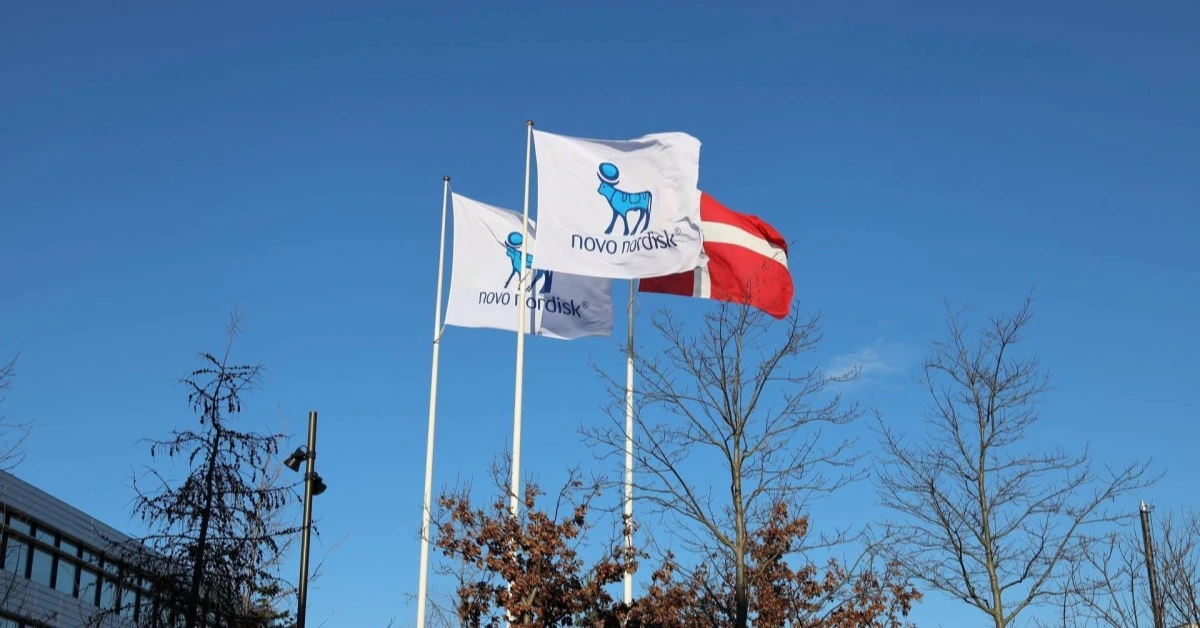
DENMARK – Novo Nordisk, the Denmark-based pharmaceutical powerhouse, has unveiled plans to invest DKr8.5 billion (US $1.2 billion) in a new state-of-the-art production facility in Odense, Denmark.
Announced on December 16, the facility will focus on manufacturing treatments for rare diseases, including haemophilia, and will feature a massive warehouse spanning over 40,000 square meters.
This strategic move underscores the company’s commitment to expanding production capacity in response to surging global demand for its life-changing medicines.
The new Odense site is expected to generate 400 permanent jobs upon completion in 2027. Construction is already underway, with up to 1,000 external workers involved in the process.
According to Henrik Wulff, Novo Nordisk’s Executive Vice President of Product Supply, Quality, and IT, the facility will incorporate cutting-edge technology to ensure the highest standards of quality and sustainability.
In addition to advanced manufacturing capabilities, Novo Nordisk plans to plant 4,000 trees, integrate solar panels for on-site energy generation, and create public spaces with lakes and forests from reclaimed materials.
This development comes at a time of remarkable growth for Novo Nordisk. The company reported a 21% increase in net profit to DKr27.3 billion (US $3.85 billion) for the third quarter of 2023, driven by soaring sales of its blockbuster obesity and diabetes treatments.
Wegovy, a weight-loss medication approved in several countries including the United States, Britain, and Germany, saw a 42% surge in sales in the first nine months of the year.
Ozempic, another semaglutide-based drug initially developed for diabetes but widely used for weight loss, recorded an even higher sales growth of 54% during the same period.
Together, these products cement Novo Nordisk’s dominance, holding a 74% share of the weight-loss treatment market.
The timing of the Odense announcement aligns with Novo Nordisk’s broader efforts to address production constraints.
Global shortages of Wegovy and Ozempic have been exacerbated by unprecedented demand.
To tackle these challenges, Novo Holdings, the controlling shareholder of Novo Nordisk, recently completed a US $16.5 billion acquisition of Catalent, a global contract development and manufacturing organization.
This acquisition, approved by the Federal Trade Commission and the European Commission, is expected to significantly enhance the production capacity of Novo Nordisk’s glucagon-like peptide-1 receptor agonists (GLP-1RAs).
Beyond obesity treatments, Novo Nordisk is strengthening its presence in rare diseases, particularly haemophilia.
Its portfolio includes Alhemo (concizumab) and the antibody Mim8, with promising data anticipated from the Phase III FRONTIER2 trial in haemophilia A.
The company is also exploring innovative oral antibody treatments through early-phase trials of its candidate, Inno8.
Novo Nordisk’s investment in Odense reflects not only a response to immediate production needs but also a strategic step toward sustainable growth.
With the World Obesity Federation predicting that over half the global population will be overweight or obese by 2035, the economic impact of obesity could exceed US $4 trillion annually.
Novo Nordisk is positioning itself at the forefront of addressing this global health crisis while reinforcing its leadership in rare disease therapies.
As Europe’s most valuable listed company, Novo Nordisk has committed to increasing its total investments to US $6.8 billion in 2024, further solidifying its role as a leader in innovation and patient care.
XRP HEALTHCARE L.L.C | License Number: 2312867.01 | Dubai | © Copyright 2025 | All Rights Reserved